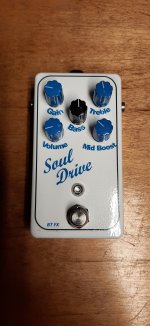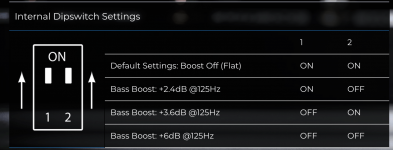I'm considering building the Solenoid Overdrive. So I looked up The bass boost options on Xotic's site. Xotic shows FOUR switch options, using the 2 internal dip-switches. Looking at the Solenoid schematic in the PedalPCB's Build Docs, if both R9 and R10 resistors are identical, that results in THREE bass options, not FOUR. 1 ON & 2 OFF is the same as 1 OFF and 2 ON. I found a different schematic (Aion) that shows a 15k and a 10k, instead of two 15k resistors. Looking for someone to confirm that 15k & 10k are the correct as opposed to the TWO 15k resistors, which I suspect is a mistake.
thanks in advance!
thanks in advance!




